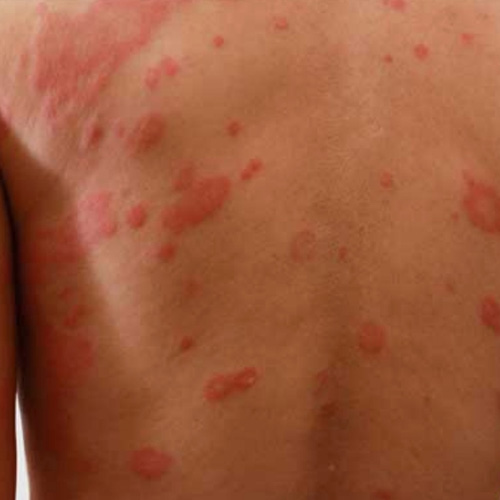Urticaria

When an allergic reaction occurs, the body releases a protein called histamine. When histamine is released, the tiny blood vessels known as capillaries leak fluid. The fluid accumulates in the skin and causes a rash.
Hives affect around 20 percent of people at some time in their life.
Causes
Urticaria occurs when the body reacts to an allergen and releases histamine and other chemicals from under the surface of the skin.
The histamine and chemicals cause inflammation and fluid to accumulate under the skin, causing wheals.
Examples of known triggers include:
- medications, including some antibiotics and non-steroidal anti-inflammatory drugs (NSAIDs), such as aspirin and ACE inhibitors, used for high blood pressure
- foods, such nuts, shellfish, food additives, eggs, strawberries, and wheat products
- infections, including influenza, the common cold, glandular fever, and hepatitis B
- bacterial infections, including urinary tract infections and strep throat
- intestinal parasites
- extreme temperatures or changes in temperature
- high body temperature
- pet dander from dogs, cats, horses, and so on
- dust mites
- cockroaches and cockroach waste
- latex
- pollen
- some plants, including nettles, poison ivy, and poison oak
- insect bites and stings
- some chemicals
- chronic illness, such as thyroid disease or lupus
- sunlight exposure
- water on the skin
- scratching
- exercise
In over half of all cases, people never find the exact cause.
Chronic urticaria may start as an autoimmune response, but why it happens is unclear.
